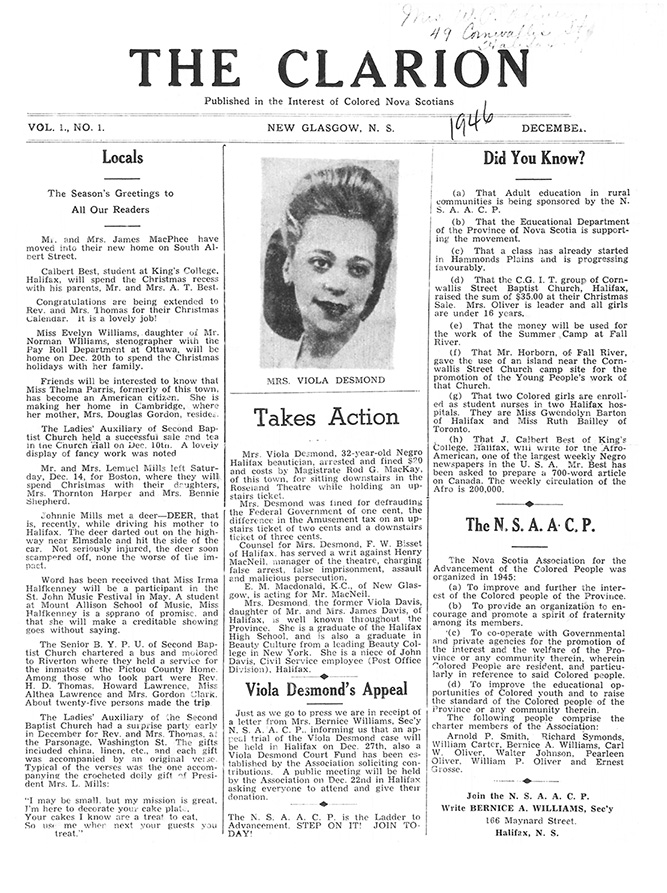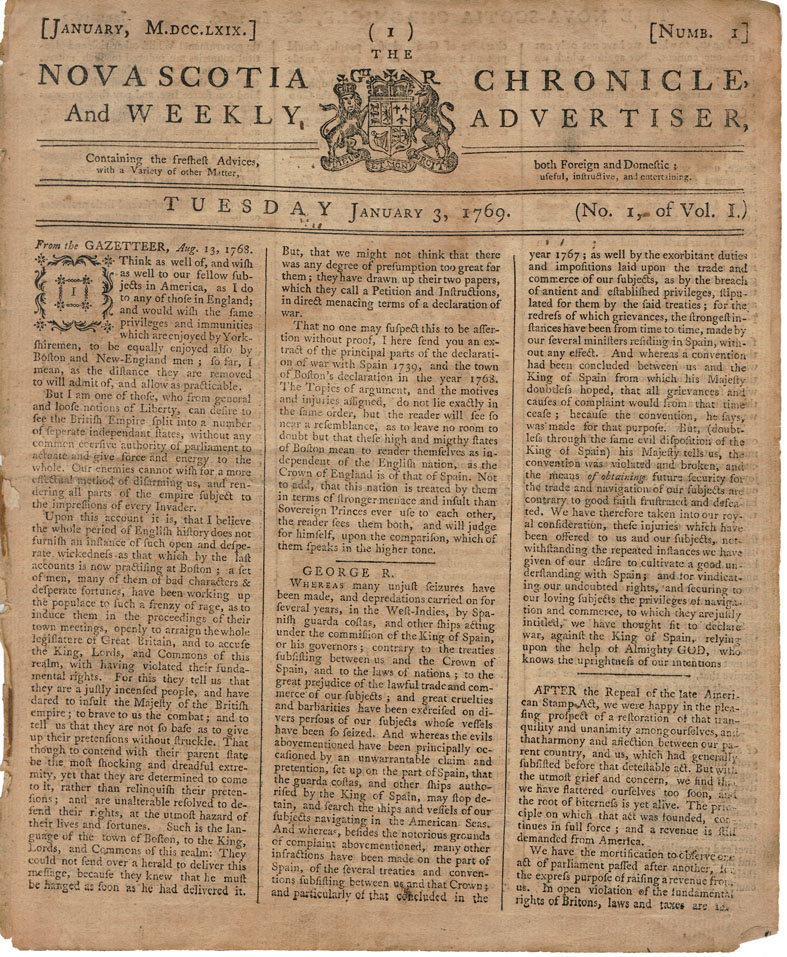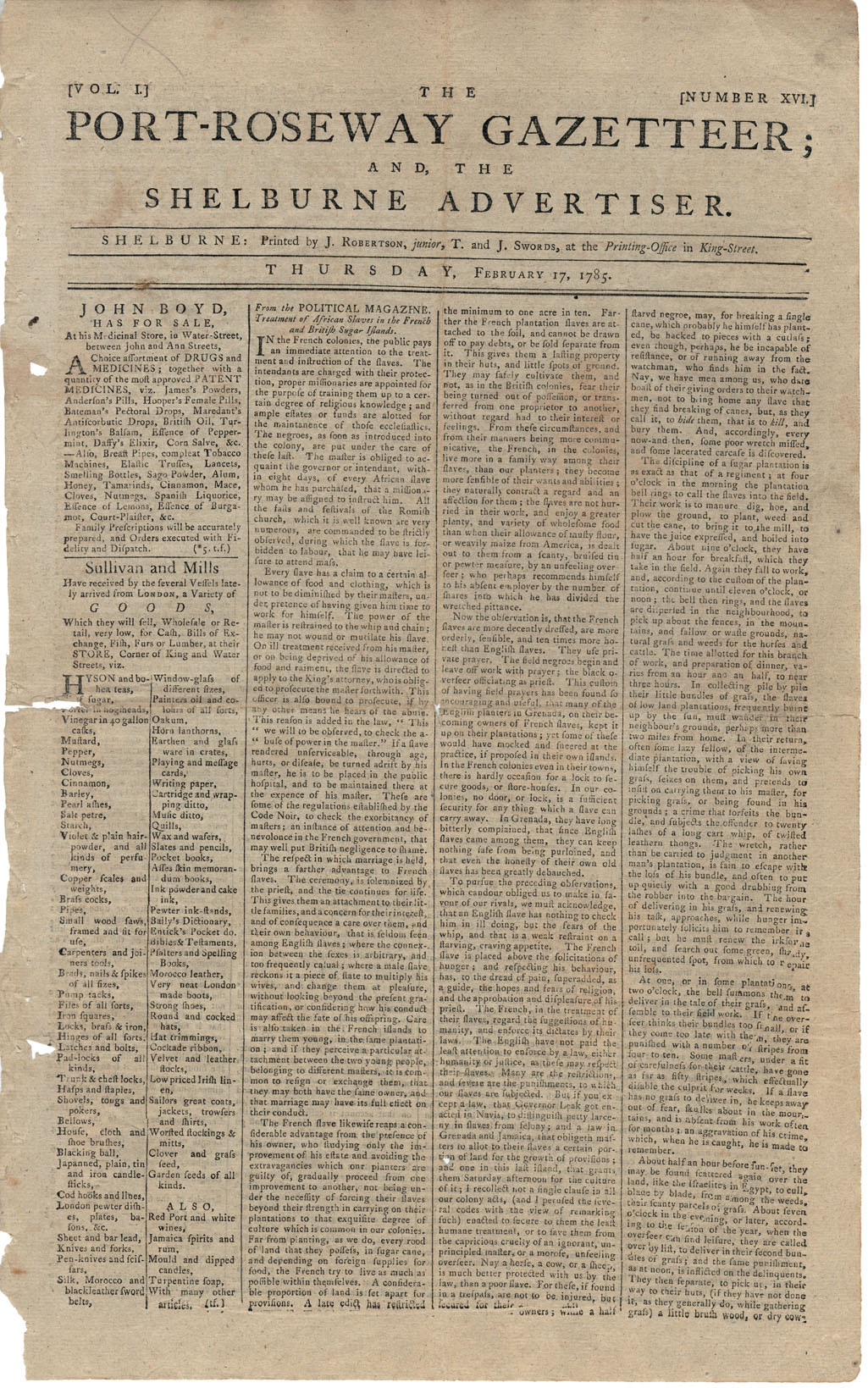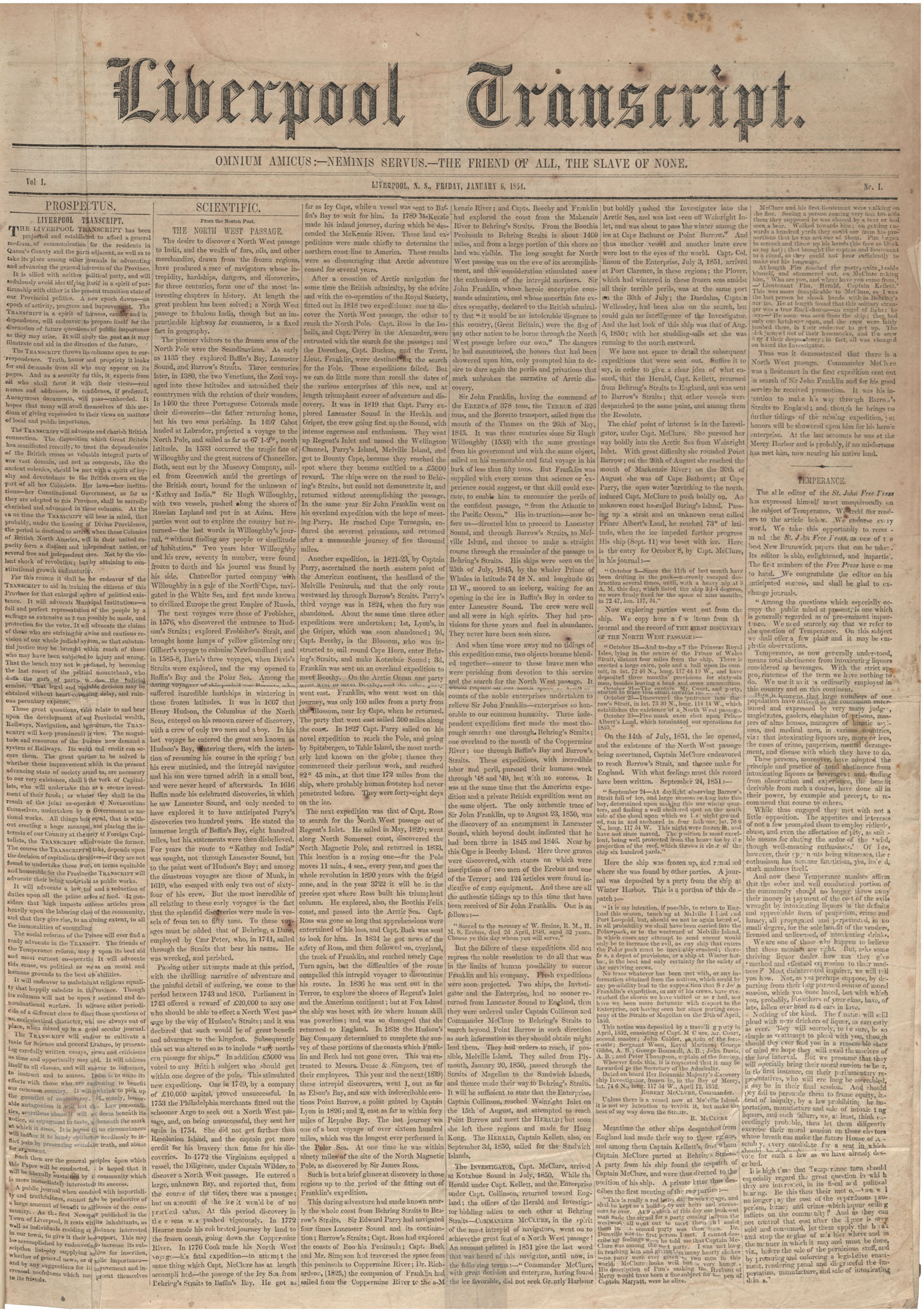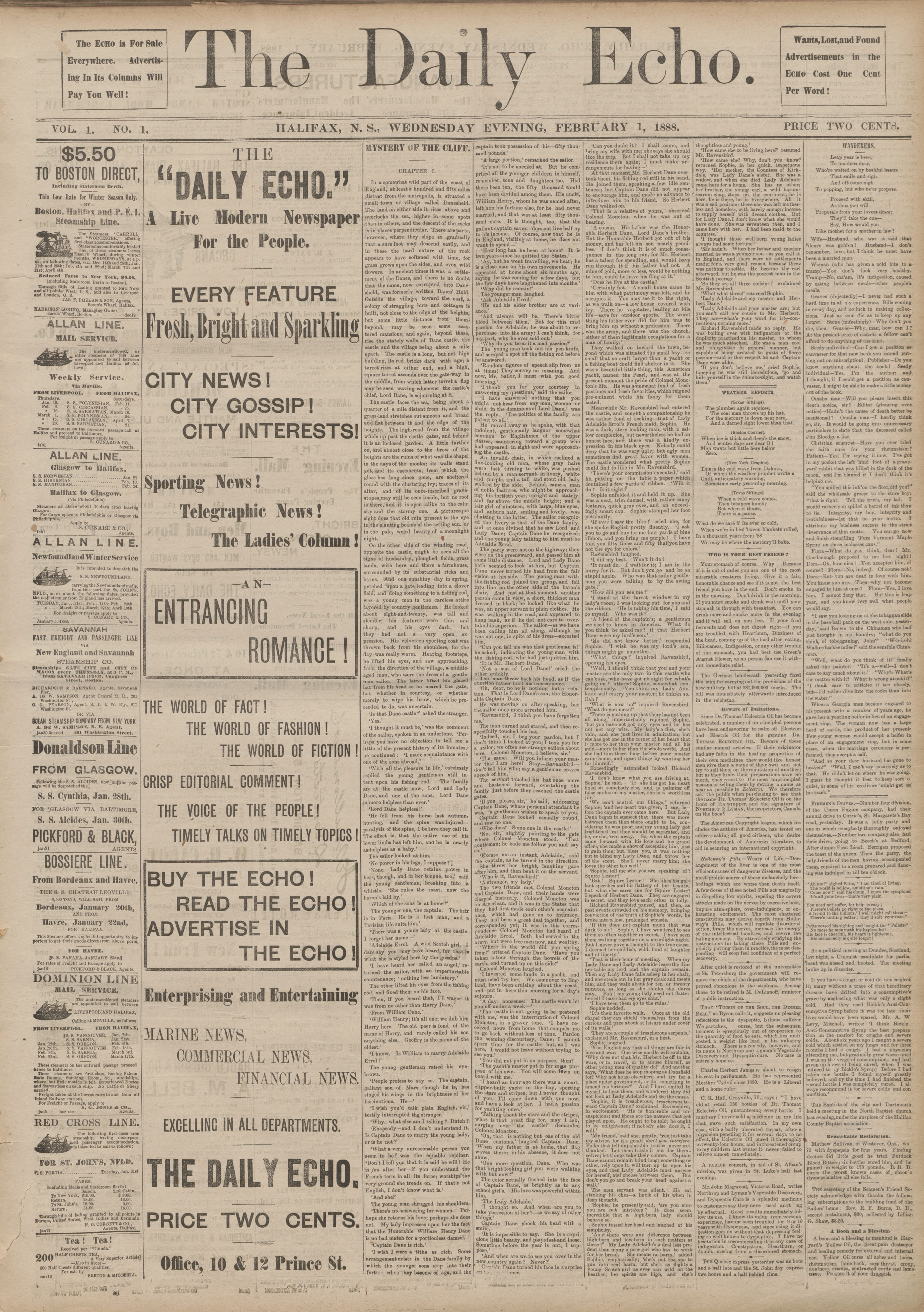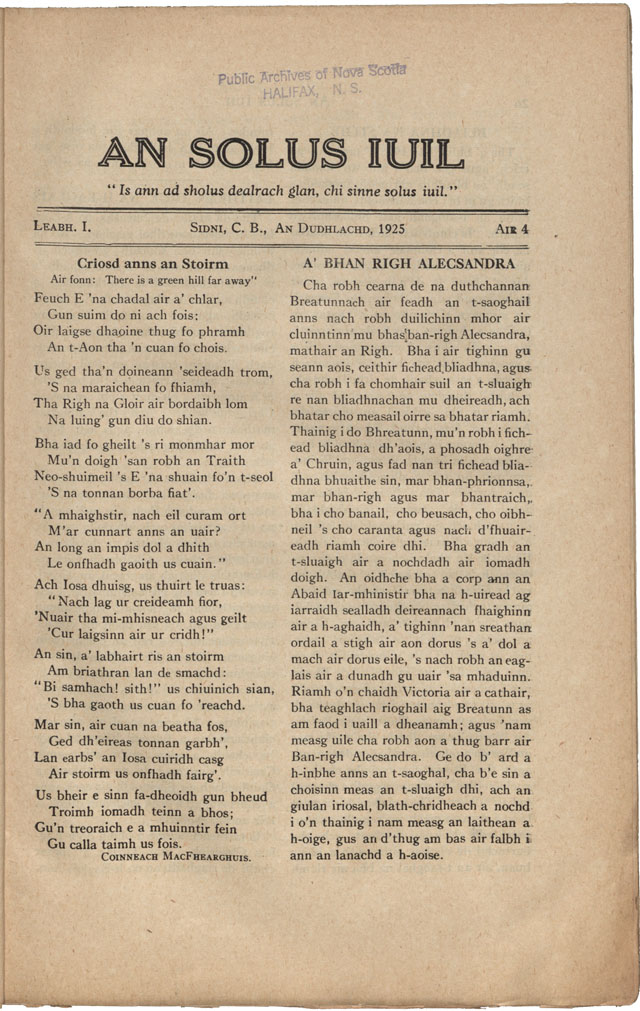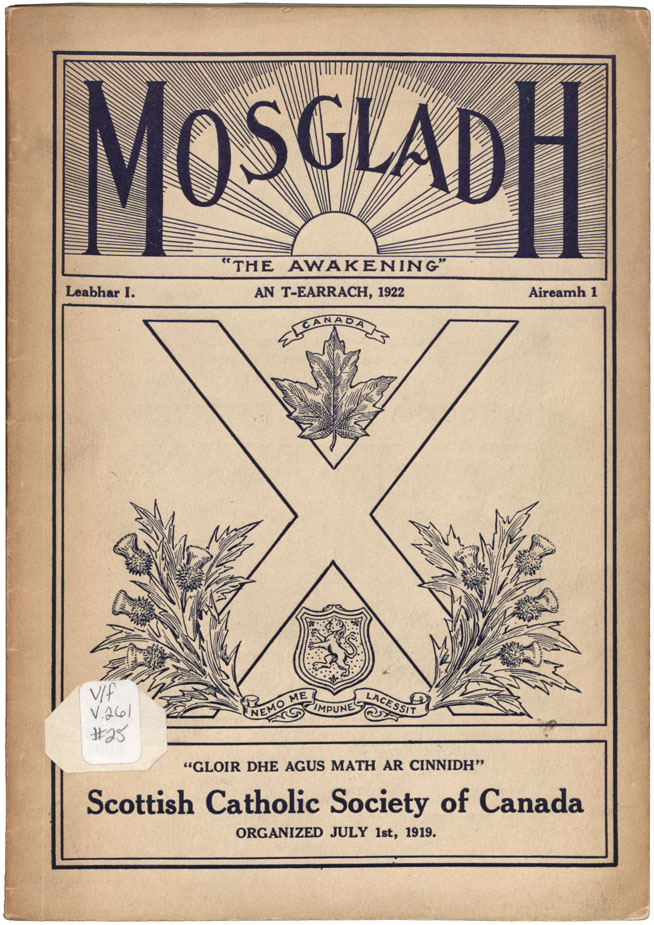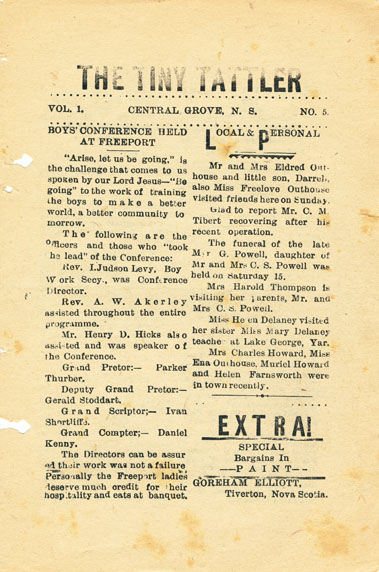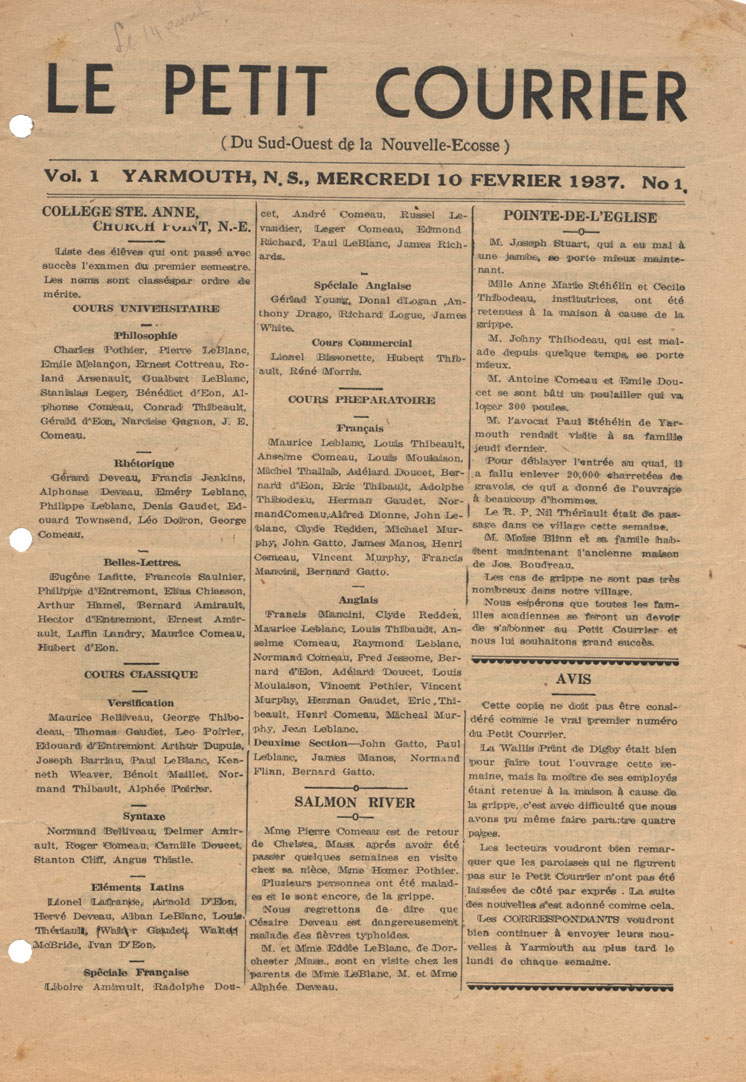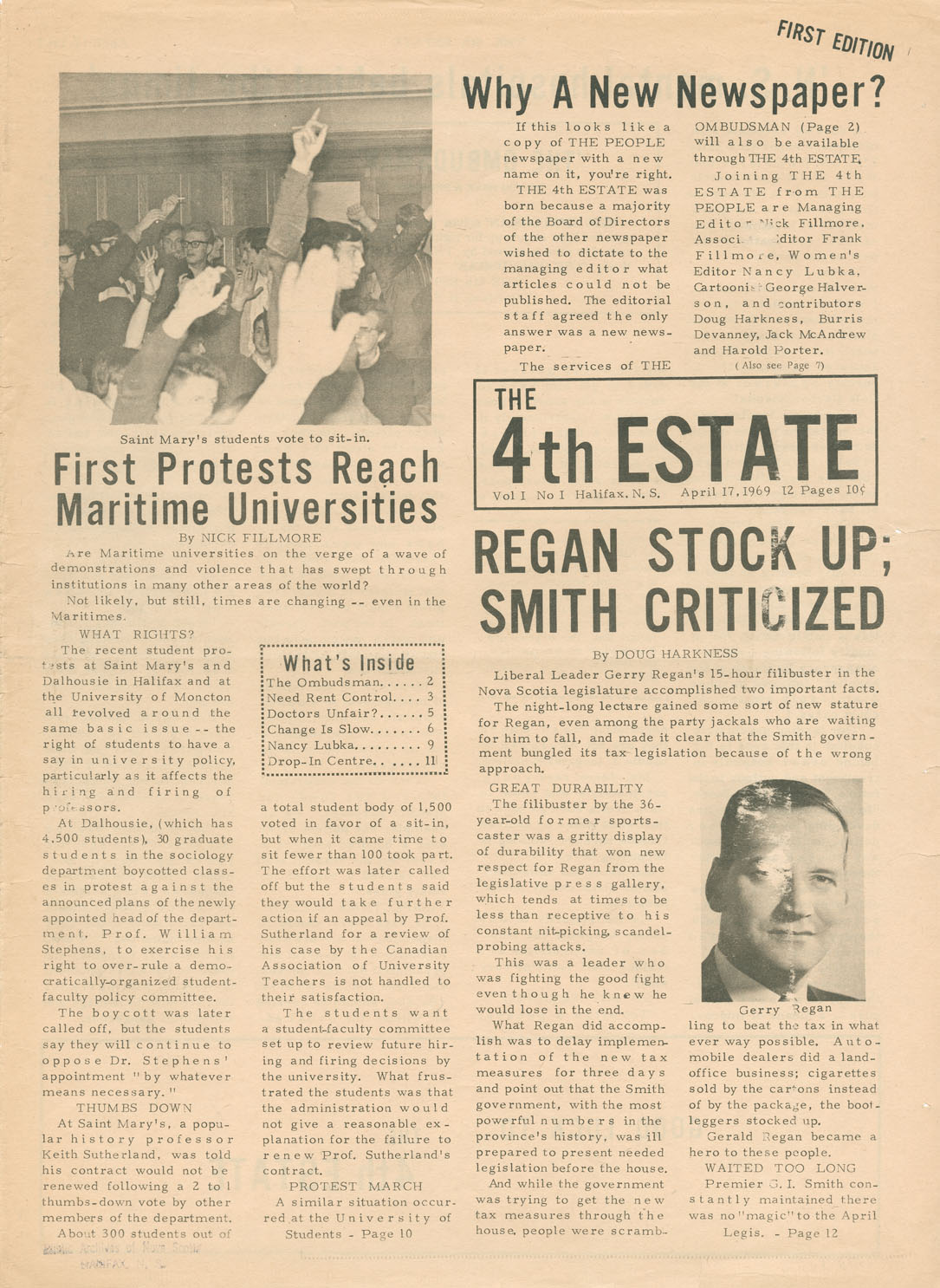Nova Scotia Archives
Newspapers
Newspapers serve as a window into the past, making them one of Nova Scotia Archives’ most used resources. Search 20+ digitized papers from across the province, or plan what papers to look at on your next visit.
The Gazette, Glace Bay
The Gazette, Glace Bay, "Nova Scotia's Independent Newspaper" began as a daily in 1904. Published by the Gazette Publishing Company, its manager in 1909 was John Byrenton, who was replaced in 1923 by A.D. MacNeil. The Nova Scotia Archives is the only known repository with issues from 1937 to 1947 (NOTE 1937-1938 online now). In August 1942 The Gazette was purchased by the coal miner's union and rebranded as the first newspaper in Canada to be "owned by the people for the people". Its editorial pages committed to telling the people's side of the story supporting the labour movements and Co-operative Commonwealth Federation (CCF).
Nova Scotia Digitized Historical Newspapers
Newspapers are, and always have been, a mirror held up to reflect who we are, how our communities came to be, how we live our daily lives, and how we view the world around us. 'Old' newspapers have special value, because they enable us to look back and see what the world was like 20, 50, 100 or even 200 years ago.
Presented in this resource are fifteen different newspapers published in seven very different Nova Scotia communities over a span of 230 years — from The Nova Scotia Chronicle and Weekly Advertiser in 1769, to Le Courrier de la Nouvelle-Écosse in 2002. Begin exploring the surviving issues for each newspaper, for the years indicated — 163,000 digitized pages in all!
Nova Scotia Newspapers on Microfilm
Explore this searchable database to plan onsite newspaper research at the Nova Scotia Archives – information about 8,951 reels of microfilm, for 536 different Nova Scotia newspaper titles.
The Nova Scotia Chronicle and Weekly Advertiser digitized newspaper issues from 1769 and 1770
This title is one in an unbroken chain of official and semi-official government newspapers published in Nova Scotia, from the Halifax Gazette on 23 March 1752 to the present-day Royal Gazette. The Nova Scotia Chronicle and Weekly Advertiser has been called 'the liveliest journal of opinion produced in Canada' for its time; regular features included tide tables, shipping news, weather reports and advertisements. It had less than 80 subscribers when it began in 1769, and lasted only a year before taking a new title, the Nova Scotia Gazette and Weekly Chronicle.
The Royal American Gazette digitized newspaper issues from 1785
Shelburne was founded in 1783 by some 15,000 political refugees displaced in the aftermath of the American Revolution. For a fleeting moment it was the fourth-largest community in North America, and with a population that large could sustain several newspapers in the early years. The Royal American Gazette was the first; begun in New York City in 1777, it migrated north with its publisher, James Robertson, in 1783. It featured local advertisements, reprints of news items from foreign newspapers, and some local content. Its Shelburne life ended when Robertson moved to Charlottetown PEI about 1785-86.
The Port-Roseway Gazetteer and The Shelburne Advertiser digitized newspaper issues from 1785
This newspaper began in 1784, as a sort of literary magazine featuring essays, poetry, stories and letters reprinted from English and American periodicals, with occasional local content. The publisher was the nephew of James Robertson Sr., who published The Royal American Gazette. When Robertson Sr. moved to Charlottetown about 1785, taking his printing press with him, the Gazetteer and Advertiser ceased publication.
Acadian Recorder digitized newspaper issues from 1813 to 1853
The Acadian Recorder was a weekly Halifax newspaper first published in January 1813 by Anthony H. Holland. He was joined in 1821 by his brother, Philip, who took full control of the publication in 1824. The paper eventually came under the auspices of Mssrs. John English and Hugh W. Blackadar in 1837. The Recorder was what we now call a 'newspaper of record' because of its lengthy publication history (nearly a century) and the quality of its news coverage. In the early days, it printed local, national and international news stories. Other features included a weekly almanac, shipping news, obituaries and wedding announcements, a poetry or story section, and a wide range of advertisements.
Liverpool Transcript digitized newspaper issues from 1854 to 1867
This newspaper was published weekly, provided there was sufficient ink and paper, out of S.J.M. Allen's offices in Liverpool, Nova Scotia. Taking as its motto, "The Friend of All, the Slave of None," it began in January 1854 and continued under Allen until 1867 when publication passed to Silas M. Bryden, who changed the journal's name to the Liverpool Advertiser. The Transcript was a "weekly miscellany of literature, art, science, and popular information" and is a representative example of a small town newspaper in the mid-nineteenth century. It included local news (though much was omitted, based on the assumption that everyone already knew what was happening in town) as well as national and international items. Other key features included shipping news, poetry and story sections, wide-ranging advertisements, and even, on occasion, word and logic puzzles.
The Bee digitized newspaper issues from 1835, 1836, 1837 and 1838
Published in Pictou from 1835 to 1838, this was one of the earliest newspapers in Nova Scotia to appear outside Halifax. It was printed on the press of — and may have been the successor to — the Colonial Patriot, Pictou's first newspaper (1827). Like its predecessor, The Bee supported progress and reform, promoted agricultural interests, and was considered so radical that it was banned from the Halifax Exchange Reading Room in 1837.
The Eastern Chronicle digitized newspaper issues from 1867 to 1888
Formed in Pictou from the joining of the Mechanic & Farmer and Presbyterian Banner in 1843 — The Eastern Chronicle was devoted to religion, agriculture, literature, politics, and general intelligence. Purchased by Robert McConnell and W.B. Alley and moved to New Glasgow in 1866 and known briefly — 1866-1867 — as The Eastern Chronicle and Pictou County Advocate. With the move to New Glasgow the paper commenced publishing twice a week but reverted to weekly in April of 1870. It was sold to Daniel Logan in 1877, then succeeded by S.M. MacKenzie and later James A. Fraser of the Chronicle Publishing Company 1881-1946. The final issue appeared on 24 September 1953 (Hector Publishing Company).
The Daily Echo digitized newspaper issues from 1888
The Citizen and Evening Chronicle of 31 January 1888 contained a brief notice of its demise and rebirth as The Daily Echo. The new title set out to be entirely separate and distinct from the Morning Chronicle carrying “light literature and the current events of the day… avoiding the many unpleasant topics that prove to be so objectionable to the family circle." While "City News, city gossip, city interests" was its motto, it also carried "the world of fact, the world of fiction, and the world of fashion." Lucy Maud Montgomery would later work there and confided to her diary that life at the Echo was not “all beer and skittles”. The paper modified its title to the Evening Echo at the start of 1920 and continued until 21 January 1927 when it was rebranded as the Daily Star.
The Atlantic Advocate digitized newspaper issues from 1915 and 1917
The Atlantic Advocate was Nova Scotia's first African Canadian newsmagazine. Its publishers, Wilfred A. DeCosta, Miriam A. DeCosta and Dr. Clement Courtenay Ligoure, incorporated as The Atlantic Advocate Association Ltd. on 8 June 1916. Only four issues have survived — the first, for April 1915 (held by Nova Scotia Archives) and three others, namely January, April and May 1917 (held by Vaughan Memorial Library, Acadia University, Wolfville, NS). The magazine covered a range of topics — historical, religious, economic, political, military, literary, social and local. Community notes appeared from across Nova Scotia, including Amherst, Digby, Halifax, Hammonds Plains, Liverpool, Shelburne, Westville, Weymouth and Wolfville, as well as from New Brunswick, Quebec and Ontario.
An Solus Iùil - (Guiding Light) digitized newspaper issues from 1925 to 1927
A monthly publication out of Sydney, Cape Breton, An Solus Iùil was a Gaelic newspaper with English sections relating church news. The focus of the paper was Presbyterian news, including but not limited to, mission efforts, ministerial appointments and church meetings; the occasional wedding was announced as well.
Fear na Céilidh - (The Visitor) digitized newspaper issues from 1928 to 1930
Published monthly out of Sydney, Cape Breton, Fear na Céilidh was bound rather than taking the traditional form of a newspaper, and included advertisements, largely in English with images, on the front and back covers. The newspaper itself was published entirely in Gaelic, in an effort to preserve and cultivate that beautiful language. The newspaper promised a "well-edited selection of interesting reading, carefully written and correctly printed." The annual subscription was $1.00 for 12 issues — a small price to pay for maintaining and promoting the language.
Mosgladh - (Awakening) digitized newspaper issues from 1922, 1923 and 1928 to 1933
This Gaelic newspaper was published by the Scottish Catholic Society in Sydney, Cape Breton. It appeared monthly, although the first several issues are followed by a gap of five years (1923 to 1928) before monthly publication resumed. In contrast to the other Gaelic papers, Mosgladh was published mostly in English, with a few Gaelic translations of prayers, Gaelic songs, and some Gaelic stories. Most of the news items featured relate to the Roman Catholic Church.
Teachdaire nan Gàidheal - (The Messenger of the Gaels) digitized newspaper issues from 1924 to 1929 and 1932 to 1934
This predominantly Gaelic newspaper was published monthly in Sydney, Cape Breton. It featured Gaelic poetry and stories, with each issue also including a unique feature that demonstrated the publishers' commitment to preserving the Gaelic language — namely a Gaelic lesson, usually consisting of basic vocabulary and some points of grammar. The first such lesson began with a note that there are only eighteen letters in the Gaelic alphabet, and then explained how to pronounce them.
The Tiny Tattler digitized newspaper issues from 1933-1936 and 1938
Billed as 'Canada's Smallest Newspaper,' this unique title was published intermittently in Central Grove, Digby Neck (Digby County) from 1933 to 1943. Printed on a small press with hand-set type, the Tattler began with 18 subscribers and built to over 5,000 at its peak, across Nova Scotia and beyond. A variant title, The Tiny Telegram, was also published by Shortliffe Print in Caledonia, Queens County, beginning in 1938. The issues digitized here were donated by the family and arrived bound in yearly increments, each with a hand-decorated cover. The Tattler continues to generate interest in the local news, advertisements and perspective it provided 75 years ago.
Le Courrier de la Nouvelle-Écosse digitized newspaper issues from 1937-2002
Le Courrier is Nova Scotia's leading French-language newspaper, and the only one with province-wide coverage and distribution. First published by Désiré d'Éon as Le Petit Courrier (Du Sud-Ouest de la Nouvelle-Écosse) on 10 February 1937, it has appeared weekly ever since, informing its readers, defending the interests of Acadians and francophones, and providing a bridge linking all Acadian regions in the province. It offers community news and events, extended articles, advertisements, announcements, photographs and special supplements, all directed towards supporting Nova Scotia's large, dispersed and diversified Acadian population, its businesses, industries, economy, daily activities, schools and higher education, politics, cultural life and heritage. Le Courrier offers an outstanding and unparalleled perspective on 66 years' accumulated history of Nova Scotia's Acadian population, thus enabling exploration of interests, activities, accomplishments, concerns and community issues across a broad swath of the 20th century.
The Clarion digitized newspaper issues from 1946 to 1949
Started as a single undated sheet by Carrie Best in 1946 with an intent to publish every two weeks The Clarion was centered on life around Second Baptist Church in New Glasgow with sections on "Our church", "Our homes" and "Our community". The Clarion was relaunched in December, 1946 as a multi-paged tabloid sized publication featuring the story of Viola Desmond's arrest in New Glasgow's Roseland Theatre. With this issue the paper, edited by Carrie Best, moved from covering the local community to being an advocate for racial equality across the province and covering, in her words, "the progress and achievement of the Coloured people." Later formatted as a broadsheet the paper went national in August 1949 when it was issued as The Negro Citizen. The few issues appearing here survived because one subscriber, Mrs. W.P. Oliver, kept these issues and later loaned them to the Nova Scotia Archives for microfilming. There appear to be no other surviving copies and the location of these originals is now unknown (the Nova Scotia Archives would like to find copies of any of these publications).
The 4th Estate digitized newspaper issues from 1969 to 1977
From its first issue on 17 April 1969, The 4th Estate established itself as the independent 'second viewpoint….[and] questioning voice in print in our city and province.' Near the end, in January 1977, publisher Brenda Large wrote, 'The 4th Estate really shouldn't exist at all. All the odds are against it and continue to be against it. But it has survived for eight years due to the work of Nick Fillmore and others who have contributed to the paper and have been loyal readers over the years.' Progressive, radical and provocative, The 4th Estate focused on the issues that mattered in late 20th century Nova Scotia — and which continue to matter to this day.
GRASP digitized newspaper issues from 1970 to 1976
Started in the summer of 1970 the GRASP — Growth, Readiness, Advancement, Self-determination, People — was the publication of the Black United Front of Nova Scotia, Halifax. The Black United Front advocated for obtaining economic and political power for Blacks, promoting black history and culture, assisting in the development of a positive black self-image, developing leadership and community organization skills and providing resources through which the black community could access self-help programmes.
THE RAP digitized newspaper issues from 1986 to 1988
THE RAP 1986-1988 was published by the Black United Front of Nova Scotia in the mid-1980s after a challenging time for the organization. The reconstituted organization continued to promote earlier BUF objectives and also paid greater attention to education and literacy, affirmative action, and provision of legal services.


